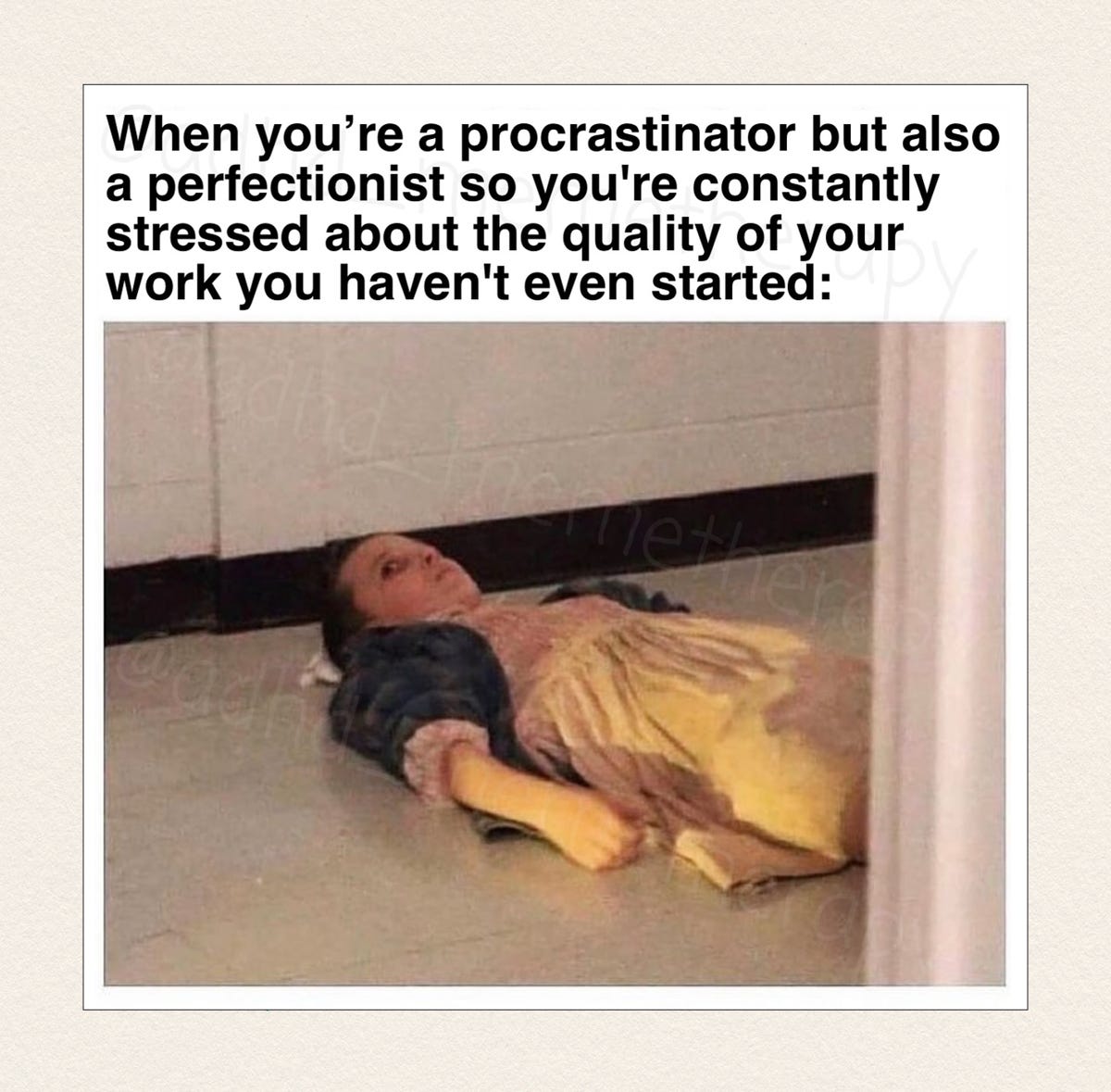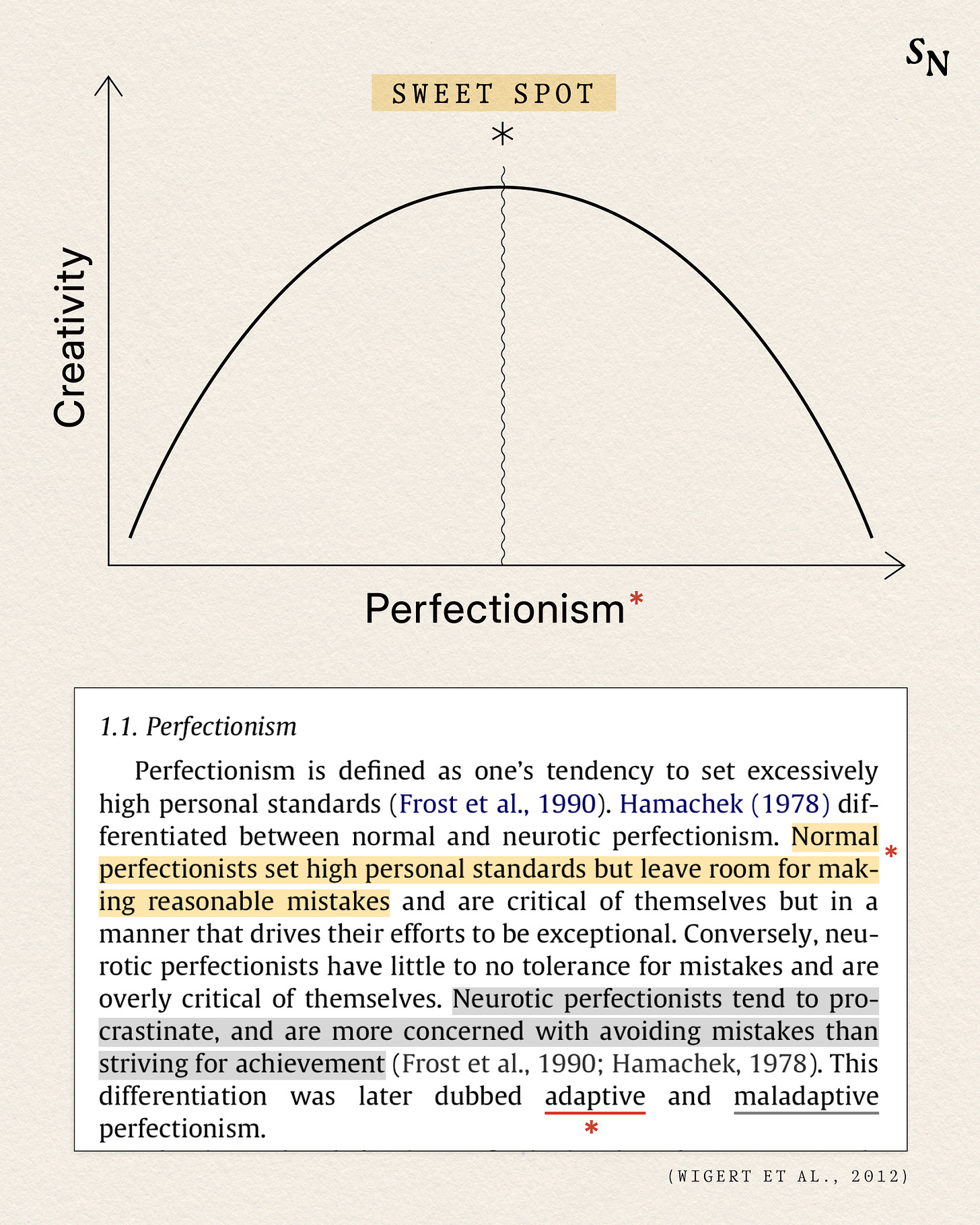Welcome to Second Nature: a space for cultivating your creative growth. 🌿 Together, we’ll explore the art and science of creative life and work through psychology, philosophy, and human experience. These topics are a true passion of mine, something I’ve been exploring for years. I’m thrilled to finally start sharing these ideas with you.
Beginnings inhabit a sacred, terrifying space. Their promise carries an intoxicating mixture of anxiety, anticipation, and electricity. They can be exciting, but they can also expose the tender gap between what we hope to build and what we manage to create.
Rollo May, observed that creative anxiety stems from “the hopeless discrepancy between conception and realization,” a contradiction fundamental to all creative processes. In fact, I’m experiencing this right now—writing and rewriting this very essay. I get caught somewhere between what I know about creativity and the very real fear of putting imperfect work into the world. It’s why I keep restarting and revising, always convinced that this time, I’ll get it right. It’s why so many of us hesitate and can’t fully commit to empty sketchbooks, writing essays we’ve been meaning to, or starting businesses we’ve been dreaming about.

We wait to begin until we feel ready. But no one is ever truly ready.
I’m not alone in this; there’s research examining this exact struggle.
THE DARK SIDE OF HIGH STANDARDS
In a 2012 study, researchers wanted to better understand the effects of perfectionism on creativity. They found that “adaptive perfectionism” (having high personal standards while allowing room for mistakes) was positively associated with creative behavior and performance. However, when standards become excessively high and perfectionism tips from healthy striving into rigidity, creativity diminishes.

The researchers found an inverted U-shaped relationship between perfectionism and creativity. Moderate levels of adaptive perfectionism can enhance creativity, but beyond a certain threshold, even “healthy” perfectionism begins to inhibit creative expression. “Having extremely high personal standards and rigid organizational tendencies may inhibit the exploration of unique ideas and activities.” It’s a helpful reminder that when pursuing a new creative project or life goal, you may want to periodically assess your standards to determine if they’re providing beneficial structure or if they’ve become so rigid that they’re preventing forward momentum.
So, where does that leave someone like me, who can cite a list of studies on creative risk-taking and ask all the questions, but struggles with how to take said risks?
THE COURAGE TO BE IMPERFECT
I still come back to this advice that I first came across during art school. Ira Glass’s reflections on creative beginnings:
“Nobody tells this to people who are beginners, I wish someone told me. All of us who do creative work, we get into it because we have good taste. But there is this gap. For the first couple years you make stuff, it’s just not that good... And your taste is why your work disappoints you. A lot of people never get past this phase, they quit.”
But, it’s not just when you’re starting your career. It’s every time you start something new. This gap between our taste and our initial output can torture us if we let it. In my case, I envision building a space that perfectly balances scientific rigor with creative intuition; it’s visually delightful AND intellectually rigorous; it allows me to consult while also building community; and of course, it immediately resonates with every person to ever come into contact with it (lol). But at some point, all the perfecting and hyper-fixating on this vision became an obstacle rather than an inspiration.
Mastery requires starting. Starting requires embracing imperfection.
If you recognize yourself in this creative struggle, pause and consider journaling or reflecting on these questions.
Am I spending more time researching and refining than creating?
Are my standards inspiring me to do better work, or am I getting in my own way?
When I imagine sharing this work, am I waiting for “perfect” conditions that may never come?
How much of my creative energy goes into critiquing what I’ve already made?
What would change if I treated my creative practice as practice?
PERMISSION TO BEGIN
Little by little, I’m accepting that I can’t orchestrate every detail from a distance and expect excellence without a lot of trial and error. I can’t possibly control every bit of how my work might be received. And especially when I haven’t even taken the first step.
Every great body of work begins with a single, imperfect piece. Every creative career starts with someone brave enough to be a beginner. Every new body of work by an established creative still has a learning curve. You just have to actually start doing it.
Five years ago, in many ways, I completely restarted my life by going to graduate school. There was a lot of fear, but it was a creative rebirth that has transformed my life. It was terrifying and imperfect and exactly what I needed. Sooner or later, we must all answer what Joseph Campbell referred to as “The Call to Adventure” in our own creative hero’s journey. Now, I’m channeling this spirit into Second Nature.
This post marks the beginning of a new adventure and something I’ve wanted to do for a long time. Second Nature is a space where we’ll explore what it means to live a creative life and what the science of creativity can teach us about nurturing our creative well-being in both life and work. Connecting deeply with our innate creativity is a journey best traveled together.
With courage and curiosity,
Kaile
UP NEXT:
📚 The Bookshelf #01 — The Courage to Create
An essential read by Rollo May that will both challenge how you think about creativity and invite you to live your most courageously creative life.🧠 Field Notes #01 — Inside the Creative Brain
Dispatches from the Paris Brain Institute! What world-leading neuroscientists are discovering about creativity, translated into insights for your creative practice.See you then!








